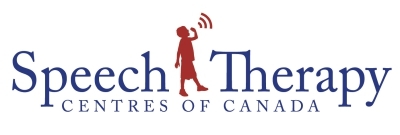
The period after your child’s speech/language delay diagnosis can be an unsettling time for the whole family. What does it mean? What happens now? Having a speech and/or language assessment for your child with a professional speech-language pathologist is a great first step, but you may wonder if, as a parent, there is even more you can do.
At The Speech Therapy Centres of Canada we recognize that today’s parents want to do more than simply observe your child’s therapy. You want to be involved. Here are some tips on how you can reinforce your child’s speech and/or language therapy at home.
Understanding and Patience
Helping your child begins with understanding the diagnosis. Your speech-language pathologist can help explain the nature of the delay. Possible sources of a speech delay in children include: oral motor difficulties (trouble using the lips, tongue, and/or jaw to make sounds), hearing problems, a cleft palate, or dental issues. Language delays can be broken down into two categories: receptive language, which refers to the process of understanding what is said, and expressive language, which is the use of words and sentences to communicate messages to others. Delays can occur in one or both categories.
Finally, speech and/or language therapy and achieving goals takes time. It is important to recognize that each child is an individual and the time it takes to achieve certain goals will vary. While there are certain age-related developmental milestones in speech and language development, these are not hard-and-fast rules. Your child’s speech and/or language delay is just that—a delay. That said, early intervention and parental support will both contribute positively to the outcome.
Encouragement
As a parent, you can encourage your child in many different ways outside of their speech and language therapy sessions. Language and speech is developed: not taught. Parents are the main language and speech role models for their children. Model the speech and language without making your child repeat what you have said. When speaking, be clear in your enunciation, so they can pick up individual sounds. Ask your child open-ended questions to encourage them to talk, but don’t directly force them to do so. A little bit of prodding is okay, but if it’s clear your child wants to stay quiet, it may be best to let the matter drop and encourage communication at a later time. Pausing to wait for what your child has to say is also important. The key is to foster a supportive, natural approach to treating your child’s speech/language delay outside of the clinical method used in their speech and/or language program. When you speak with your child he or she will likely be more encouraged to communicate.
Playtime can be a fun approach to your child’s speech and/or language delay therapy. Singing songs or reading aloud can be good methods to improve vocabulary and learn word associations. Books that feature repetition, such as those by Robert Munsch, can encourage participation and help your child form associations.
Toy phones, make-believe games, or rounds of “I Spy” can encourage talking. If your child draws a picture, ask him or her to explain what it is. By fostering your child’s imagination and communication through play, you encourage him or her to be more expressive and talkative. This can contribute to your child’s speech and/or language development in a positive way.
Everyday Events
Your child spends only a few hours per week with the speech-language pathologist, improving speech and language development in a clinical setting. As a parent, you have the opportunity to show your child the practical, real-world applications and make use of everyday situations to reinforce language. For instance, if your child is with you when you clean a room or shop for groceries, talk your way through the process. Verbally identify the items you pick up and what you’re doing with them, pausing to give your child an opportunity to talk. Another interesting approach to supporting language and/or speech therapy in the home is to go for a walk or drive through a part of the city. Toronto, for instance, has many sights and sounds you can identify for your child to further broaden their language. Remember that your child’s receptive language (the words they understand) is much larger than their expressive language (the words they use). However, by broadening your child’s receptive language, you can positively influence the development of his or her expressive language.
Collaboration
Your child’s speech-language pathologist can serve as a communication coach to help you foster your child’s treatment outside of his or her therapy sessions. They can offer techniques or exercises to use at home, along with tips for improving communication with your child. For instance, it may help your child to be able to look at your mouth when you speak. If your child is struggling with any sounds or syllables, try using more words containing those elements in your everyday conversations. Doing so will allow your child to observe your pronunciations.
The Speech Therapy Centres of Canada offers speech and language assessments and therapy in Toronto and the surrounding areas. We have no wait lists and our speech-language pathologists will work with you to develop ways to support your child’s speech therapy at home in a fun, engaging, and supportive manner. For more information, contact us today.
